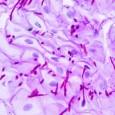What is a pre-cum?
Pre-cum is the fluid that is released from a man’s penis when he is aroued but before ejaculation occurs. It is also known as pre-ejaculatory fluid. This pre-cum is produced from 2 glands which open into the male urethra at 2 different sites. They are; Cowper’s glands and the Glands of Littre. Usually, about 4 ml of fluid leaks from these glands before ejaculation.
What is coitus interruptus or withdrawal method?
Most men and women use withdrawal method as a natural birth control method. Usually, a man withdraws penis from the vagina when he feels the ejaculation is imminent [1]. But it is not clear when that occurs and whether any sperms have leaked from the penis by the time he withdraws.
Can you get pregnant from pre-cum?
There is a myth that you cannot get pregnant from pre-cum. We intend to explore that myth and bring you solid scientific facts. The fluid secreted by these two glands contains numerous enzymes and mucus. But they do not produce sperms. However, this fluid can get contaminated with sperms. Therefore pre-cum is considered fertile and precaution should be taken to avoid pregnancy.
Disclaimer: condom-sizes.org is supported by its readers. When you buy through links on our site, we may earn an affiliate commission. Learn more.
According to NHS choices website, as soon as a penis becomes erect, millions of sperms can be found in the liquid and it is said that a man doesn’t have to ejaculate for a pregnancy to occur [2].
An interesting study has been done at the University of Hull, UK in 2010 where 27 men were asked to produce pre-cum samples for testing [3]. The researchers found that the pre-cum samples differ from one person to the other.
While some had sperms in their samples others did not produce any sperm. When these men were asked to give repeated samples, they found that those who did not produce sperms repeatedly produced no sperm samples while others who had sperms initially, always produced samples with sperms.
There is an individual variability in pre-cum samples. Some men can have sex without a condom in the initial stage and pose no risk of pregnancy while others may have a risk of pregnancy.
All the sperms that were present were found to be motile and hence can reach the fallopian tubes and fertilize with an egg. Since researchers found sperms in a majority of pre-cum in men, it was recommended to use condoms to minimize the risk of pregnancy.
But those men who do not produce sperms in their pre-cum can use withdrawal method effectively and this is the reason it works for some people.
Before this study, only 2 other studies have been done on a small number of men. In the study done by Ilaria et al detected no sperms in samples from 16 men [4] while Pudney et al found 8 samples with sperms out of 23 [5].
In conclusion, you can get pregnant from pre-cum and it is always wise to use protection.
Can you contract STD from pre-cum?
There has been a lot of research on the presence of HIV virus on pre-cum. HIV virus is usually found in sexual secretions of the body. One study was done in Boston and New York by taking samples of pre-ejaculatory fluid from HIV seropositive men [6]. The researchers looked for CD4 lymphocytes and macrophages in the pre-cum samples to determine the presence of HIV virus.
The researchers found that 6 out of 9 men in Boston and 6 out of 14 men in New York who were HIV positive, had HIV virus in their pre-cum. Therefore, there is a risk of contracting HIV and other sexually transmitted diseases with pre-cum. Not only men, but HIV can be contracted from women who produce sexual secretions as well.
From all these scientific evidence, we can understand that pre-cum has a risk of leading to unwanted pregnancies as well as contracting sexually transmitted diseases. Condoms should be used before the penis enters vagina, anus or mouth.
References:
- http://www.plannedparenthood.com/health-topics/birth-control/withdrawal-pull-out-method-4218.htm
- http://www.nhs.uk/chq/Pages/975.aspx
- https://www.ncbi.nlm.nih.gov/pmc/articles/PMC3564677/
- Ilaria G, Jacobs JL, Polsky B, Koll B, Baron P, MacLow C, Armstrong D, Schlegel PN Lancet. 1992 Dec 12; 340(8833):1469.
- Pudney J, Oneta M, Mayer K, Seage G 3rd, Anderson D Lancet. 1992 Dec 12; 340(8833):1470.
- https://www.ncbi.nlm.nih.gov/pubmed/12286905
Image: Pixabay





